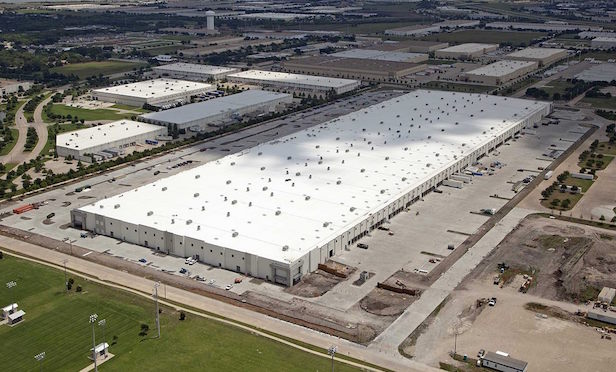 Amazon’s distribution center near Baltimore opened in 2015; e-commerce has propelled demand for mega-warehouses. (Photo: Amazon)
Amazon’s distribution center near Baltimore opened in 2015; e-commerce has propelled demand for mega-warehouses. (Photo: Amazon)
NEW YORK CITY—Supply chain modernization, spurred by the continuing rise e-commerce, is bolstering US industrial, and in particular big-box warehouses of 300,000 square feet and more, according to Colliers International’s Industrial Logistics & Transportation Solutions 2016 Mid-Year Outlook—Big-Box Market Report. “Distributors are evaluating locations, inventory levels and building amenities necessary to quench demand from consumers who are putting a premium on the rapid delivery of goods,” the report states.
“E-commerce, which saw sales grow 15% over the previous year in the first quarter of ‘16, is propelling a supply chain overhaul for retailers and wholesalers seeking to keep up with the demand for rapid delivery,” says Dwight Hotchkiss, national director, industrial | USA at Colliers. “This overhaul often involves relocation and consolidation of multiple warehouses into larger state-of-the-art facilities near population centers, ports and major intermodal facilities suitable for reaching consumers quickly.”
According to Colliers’ analysis, demand for big-box space remains exceptionally strong with only 157 of the 1,908 existing buildings vacant across the six core markets examined and a record 98 big-boxes, totaling 60 million square feet, added to inventory over the past year. In the Los Angeles metro area, including the industrial-heavy Inland Empire region, a record-breaking 45 big-boxes, totaling 22.8 million square feet, were added to the inventory this past year, bringing the total existing big-boxes in this market to 676, totaling 370.4 million square feet, by far the most in North America.
During the first half of 2016, leasing increased by 10.7% year over year, says Colliers. The demand spurred a 13.1% increase in effective rents to $4.77 per square foot.
At mid-year, just 6% of the nation’s industrial space was vacant, the lowest vacancy rate on record. Vacancies dropped in Q2 despite 63 million square feet of new space coming on line during the quarter, eclipsing the previous record of 60 million square feet established in the previous quarter. At the same time, more than 77 million square feet of space was absorbed, surpassing the previous record of 72 million square feet set in Q2 2015.
However, Colliers reports, the delivery of new supply is being kept in check. “Even with robust activity in core markets, projects under construction have declined over two consecutive quarters to 62.2 million square feet, a 12.4% drop from year-end ’15.”
Partly as a result, vacancy rates declined in 84% of the markets Colliers tracks. The firm says hat demand is expected to continue to outpace supply, creating lower vacancies, higher effective rents and positive absorption for the foreseeable future.
Demand for big-box facilities is not likely to end any time soon as many markets are reporting a record number of tenants in the market. This demand, along with restrained development, is expected to lower vacancy rates, raise effective rents and keep absorption positive for the foreseeable future.
Strong interest from institutional capital kept cap rates low at around 5.5% or lower, Colliers says. In L.A., cap rates finished mid-year at 4.9%, the lowest of any of the core North American markets.

















 Copyright © 2024 ALM Global, LLC. All Rights Reserved.
Copyright © 2024 ALM Global, LLC. All Rights Reserved.